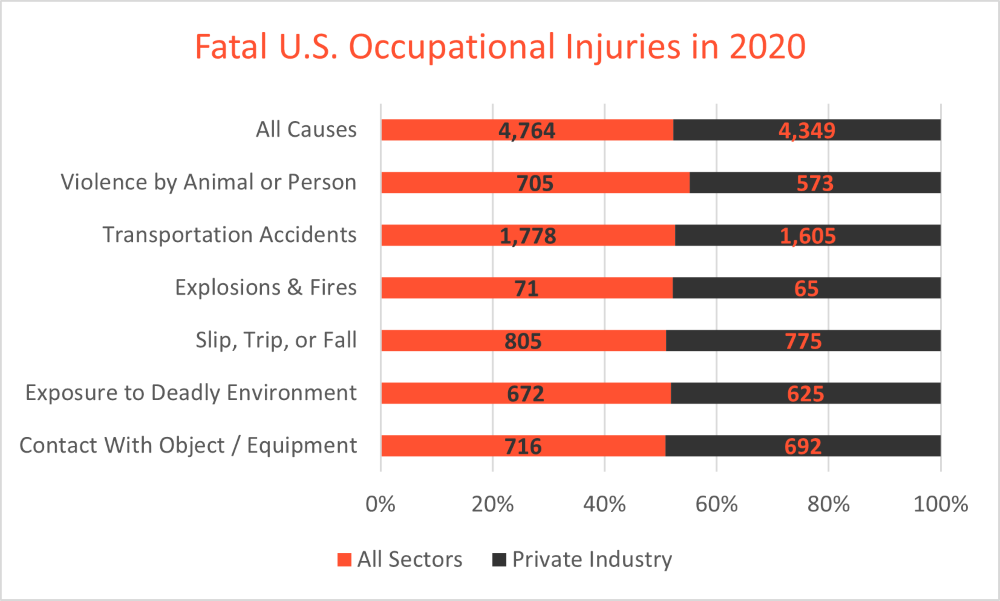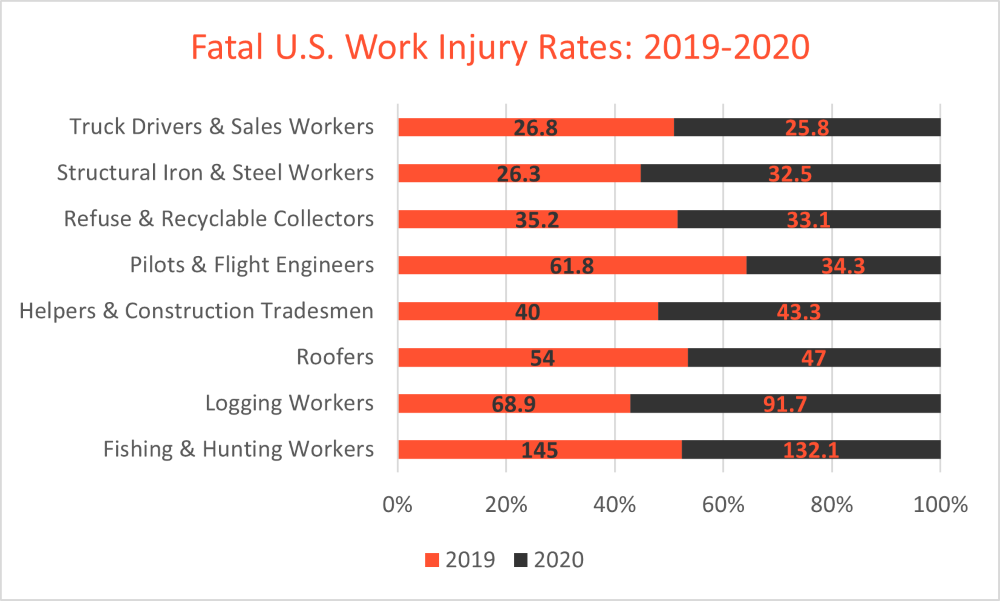Countless families across the United States make a living off income gained through employment. CNBC reports that, as of early 2022, 64% of the U.S. population was living paycheck to paycheck. This figure represents a 3% rise from the percentage of Americans living paycheck to paycheck in December of 2021. Rising gas prices and the increasing cost of groceries is currently hitting households particularly hard. With households frequently depending on the income of one or two family members, even a minor workplace injury or illness can prove financially ruinous.
Unfortunately, workplace injuries occur with regularity in the U.S., often inflicting fatal wounds or causing lifelong medical complications. In some cases, these injuries happen despite well-planned safety measures being in place to protect workers. However, many accidents are potentially preventable with effective emergency protocols, proactive managerial enforcement and oversight, and streamlined safety protocols.
In today’s article, we examine fatal occupational injury statistics in the U.S. Specifically, we look at data from 2020, which is the most recent year for which we have found reputable, published national figures. By highlighting the industries most impacted by workplace fatalities and the causes of such incidents, we hope to reduce unnecessary risks to workers across the country.
What is an Occupational Injury?
Some workplace injuries result in immediate harm, while other dangerous environments gradually impact a worker’s health over the course of weeks, months, or years. A warehouse worker hurt by a defective forklift and an HVAC installer who develops cancer because of decades of exposure to asbestos both suffer injuries due to unsafe working conditions. To differentiate between workplace-related accidents, the following definitions are widely used.
- An occupational injury includes bodily harm that happens as a direct result of a work environment or accident. Workers may suffer occupational injuries due to radiation exposure, dangerous aerosols or chemicals, defective equipment, predictable animal attacks, blood-borne pathogens, or a generally unsafe work environment.
- Occupational illnesses encompass all sicknesses that can be traced back to a work environment. The sick worker’s condition may be caused or influenced by exposure to deadly chemicals, unsafe air quality, a lack of workplace sanitation, or other preventable dangers.
- Occupational diseases are long-term illnesses that occur due to a worker’s role or general environment. For example, mesothelioma caused by asbestos inhalation may be an occupational disease. These long-term afflictions are frequently detected because of their abnormal prevalence amongst a specific group of workers, as compared to the public.
What Are the Primary Causes of Fatal Occupational Injuries?
Having broken down the different types of illnesses, diseases, and injuries that can harm workers, we turn to the causes of workplace fatalities in 2020. In a recently-published study on workplace injuries, Jacobs & Jacobs reveals that 4,764 workplace fatalities occurred throughout that specific year. An overwhelming majority of fatal injuries (92%) occurred in the private sector, as portrayed in the graph below. Transportation accidents were the single highest cause of lethal harm in the workplace (37%), while explosions and fires caused the least national fatalities (1.5%).

Which U.S. Industries Experience the Most Workplace Fatalities?
Almost all jobs have an inherent risk of injury, whether due to physical harm, illnesses, or debilitating long-term health conditions. However, we discovered that the chances of suffering serious harm are undeniably higher in some industries than others. Thanks to data sourced from the U.S. Bureau of Labor Statistics, we were able to chart the rate of workplace fatalities per 100,000 full-time workers by occupation from 2019-2020. We chose to graph the rate of fatalities instead of the overall number of fatalities so that the data visualization would not be overly distorted by the number of workers in a particular industry.

What Can You Do if a Loved One Suffers a Fatal Workplace Accident?
Every fatal workplace accident is a tragedy, particularly when negligence or an unsafe work environment causes lethal harm. If you lost a loved one to a preventable workplace incident, there may be multiple options available to you, depending on your state’s workers’ compensation policies and wrongful death laws.
- A workers’ compensation claim may entitle the spouse, children, or dependents of a deceased worker to payments associated with their loved one’s death. The recipient does not need to prove that negligence played a factor in the workplace accident to file a claim. However, in most cases, filing a workers’ compensation claim means that you cannot later sue a negligent employer for additional damages.
- A wrongful death claim is filed against the deceased worker’s employer. This type of personal injury claim alleges that the employer’s negligence directly caused the fatal incident and resulted in losses for their surviving loved ones.
To fully assess the legal options available to you and your family, we recommend speaking to a local wrongful death attorney that is familiar with your state’s laws.